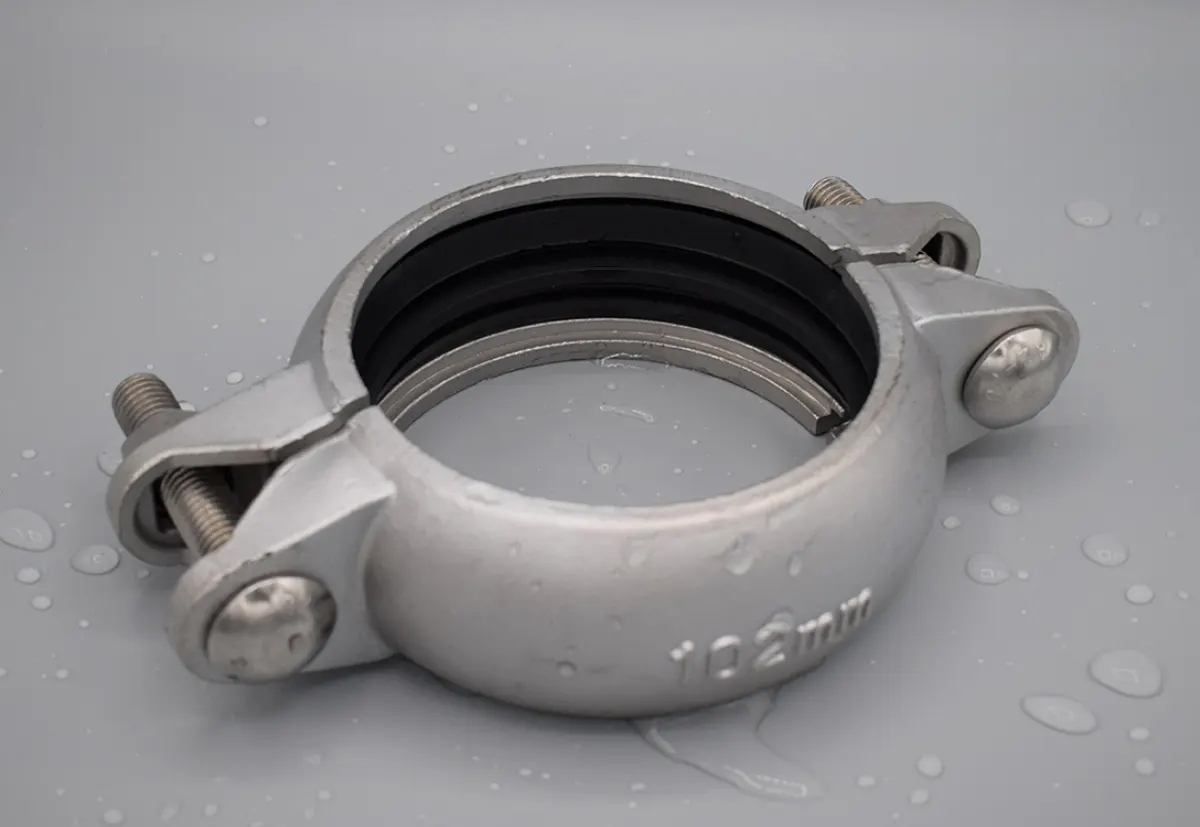Stainless ateel clamps are essential mechanical devices used to secure connections and components.They provide a vital function in numerous industrial applications.Their primary role is securing flexible hoses to rigid nozzles. They are also integral to sanitary piping systems.These clamps ensure safety and integrity across diverse fluid lines,including those using tuyaux en acier inoxydable et raccords de tuyauterie en acier inoxydable.
Defining Stainless Steel Clamps
A stainless steel clamp is a fastening mechanism.It is designed to apply compressive force evenly around an object.This force creates a tight seal or a rigid support structure.It guarantees the clamp resists rust et chemical degradation.
Fabrication and Material
The manufacturing process of stainless steel clamps is precise.The selection of the alloy directly impacts the clamp’s performance and lifespan.
- Process:Most clamps are manufactured through stamping or band forming.Stamping creates the buckle and housing.Band forming shapes the main band.High-quality production ensures smooth edges and prevents damage to hoses or pipes.
- Material:Common grades are 304 and 316 stainless steel.Acier inoxydable 304 is suitable for general use.acier inoxydable 316 offers superior corrosion resistance due to its teneur en molybdène.316 stainless steel is preferred for chemical or applications marines.
The Working Principle
- Tensioning action:
By tightening devices such as screws or bolts,the clamping band is maintained in a taut state. - Forcing action:
The clamping band continuously applies radial pressure,securing the hose firmly around the pipe fitting. - Sealing action:
For joint connections,the compressive action causes the gasket to form a seal between the two connecting points.This mechanical action ensures the joint remains leak-free.

Advantages of Stainless Steel Clamps
The alloy prevents rust and oxidation completely.This is critical in damp or chemically active settings.316 stainless steel specifically resists chloride attack.
Most clamp designs are easily loosened and reused.This simplifies maintenance and system adjustments.The reusability saves replacement costs over time.
Stainless steel clamps provide a robust holding force without adding excessive bulk,making them particularly suitable for weight-sensitive applications.
Clamps secure hoses, support stainless steel pipe lines, and join sanitary components. They are also necessary components when you Install Camlock Fittings.
Disadvantages of Stainless Steel Clamps
Excessive vibration may cause screw-type clamps to loosen,necessitating periodic retightening or the use of safety locking devices.Failure to inspect promptly may result in leakage.
Overtightening can crush soft hoses or distort thin-walled pipes.Applying insufficient torque results in leaks.A torque wrench must be used for critical applications.
Stainless steel clamps are more expensive than carbon steel variants.The initial investment reflects the cost of chromium and nickel.However,the long lifespan justifies the price.
The confined space beneath the clamping strap may accumulate moisture,particularly chloride-rich water.Prolonged exposure increases the risk of corrosion par crevasses.
Common Clamp Types and Materials
| Clamp Type | Fonction principale | Preferred Material |
|---|---|---|
| Worm Gear | Hose securing | 300 Series |
| T-Bolt | High pressure, heavy hose | 304 / 316 |
| V-Band | Bride / joint locking | 316 |
| Sanitary Clamp | Pipeline coupling | 304L / 316L |
Common Clamp Failures
| Failure Mode | Cause | Prevention |
|---|---|---|
| Rusting | Incorrect material (304) | Use 316 |
| Band Breakage | Overtightening | Use torque control |
| Slip-off | Low pressure | Retighten, inspect |
| Fatigue Crack | Vibration | Use T-Bolt |
Specialized Sanitary Clamps
- Triple-clamp System:
This system employs specialised clamps,two ferrules and gaskets,constituting the standard configuration for hygienic connections. The clamp structure creates a smooth,easily cleanable inner surface. - Raccords sanitaires:
Clamps secure specialized components such as sanitary clamps while connecting sanitary clamped tees,coudes serrés sanitaires et croix clampée sanitaire joints. - Food and Pharmaceutical Industries:
This connection method is mandatory in relevant sectors,effectively preventing product contamination.Such clamps support rapid disassembly to meet sterilisation requirements.
Nous contacter
- RM901 No.22 Tangjiaqiao Road Wenzhou Chine
- +86 577 8551 1171
- [email protected]
- https://www.kaysuns.com/



